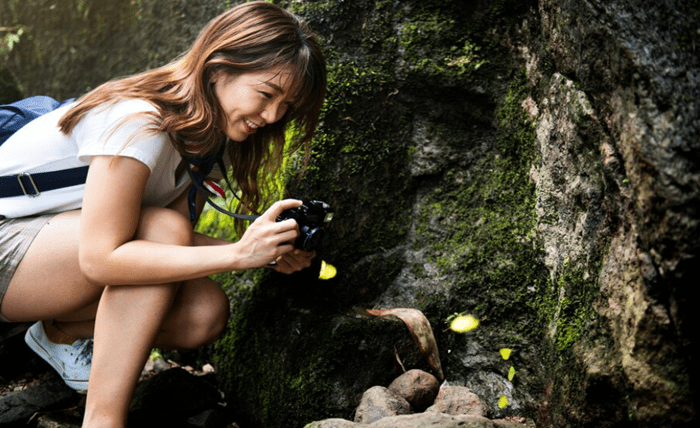Wildlife photography is a fascinating and rewarding endeavor that combines the thrill of capturing nature’s untamed beauty with the challenge of doing so under unpredictable conditions. It requires technical skills, creativity, and an understanding of animal behavior and habitats. It’s a pursuit that demands patience, as wildlife photographers often wait for hours, if not days, for the perfect shot. Perseverance is equally crucial, as initial attempts may not always yield the desired results. Most importantly, respect for nature and its inhabitants governs this art form. Photographers must always prioritize the well-being of wildlife and their environments, ensuring minimal disturbance and impact during the photographic process. In this post, Daniel Doyle Pleasantville aims to equip aspiring wildlife photographers with the knowledge and techniques needed to capture the wild responsibly and effectively, emphasizing the importance of patience, perseverance, and respect for nature along the journey.
Table of Contents
Understanding Your Equipment
Choosing the right camera and lenses is fundamental in wildlife photography. A DSLR or mirrorless camera with a fast autofocus system and the ability to shoot at high frame rates is invaluable for capturing fleeting moments in nature. A variety of focal lengths is beneficial for lenses, but a telephoto lens is essential for photographing distant subjects without disturbing them. Equally important are the accessories that accompany your camera. Tripods provide the stability needed for long exposure shots and help reduce camera shake, which is crucial for achieving sharp images, especially with heavy telephoto lenses.
Blinds and camouflage gear help you blend into the environment, making it easier to observe and photograph wildlife without being noticed. Understanding the capabilities and limitations of your gear is crucial. Familiarize yourself with your camera’s settings, such as ISO range, burst mode, and autofocus points. This knowledge will allow you to make quick adjustments in the field, ensuring you never miss a shot because of technical difficulties. Daniel Doyle Pleasantville added that successful wildlife photography is not just about having the best gear but also knowing how to use it effectively to capture the beauty and essence of your wild subjects.
Mastering The Basics
Mastering the basics of wildlife photography is pivotal, with lighting playing a crucial role in capturing the true essence of wildlife. Understanding the interplay between light and shadow can dramatically enhance the emotional impact of a photograph, highlighting the subject’s textures, colors, and even behaviors in their natural habitat. Exposure is another fundamental element; it determines how light or dark an image appears. A well-exposed photograph can capture intricate details that bring the subject to life.
Focus and depth of field are also critical; they direct the viewer’s attention to the subject or a specific part of the subject while artistically blurring the background to reduce distractions. Achieving sharp images in varying conditions requires practicing with different camera settings, such as adjusting the shutter speed in low light or utilizing a higher ISO without introducing too much noise into the image. These basics form the foundation upon which to build your wildlife photography skills, allowing for technical precision and the conveyance of the stories and emotions that nature elicits.
Field Techniques And Etiquette
Approaching wildlife safely and respectfully is paramount in wildlife photography. Patience and a keen sense of observation are your greatest allies, allowing you to minimize your presence and avoid disturbing the natural behaviors of your subjects. Moving slowly and quietly, using natural cover whenever possible, and keeping a respectful distance are essential techniques. Understanding and anticipating animal behavior is critical; knowing your subject’s habits can guide you to the right place and time, optimizing your chances of capturing candid and natural moments.
Blinds or camouflage gear can reduce visibility, helping you blend into the environment. Always prioritize the well-being of wildlife over getting the perfect shot. By following these practices, you contribute to nature conservation while honing your ability to document wildlife in its most authentic form.
Advanced Techniques
Harnessing advanced techniques such as remote cameras and drones, mastering nocturnal and low-light photography, and capturing dynamic images of wildlife in motion can profoundly elevate your work. Remote cameras and drones offer unique perspectives and access to areas that might be otherwise inaccessible, allowing photographers to capture intimate shots without disturbing wildlife’s natural behavior. On the other hand, nocturnal photography opens up a whole new world of wildlife activity under the cover of darkness.
However, specialized equipment and settings are required to effectively manage light sensitivity and motion. Capturing wildlife in motion—the swift dash of a cheetah or the powerful flight of an eagle—demands a deep understanding of shutter speed and the right timing to freeze these fleeting moments. Daniel Doyle Pleasantville notes that mastery of these advanced techniques not only expands the range of photographic opportunities but also enhances the storytelling potential of each image, bringing viewers closer to the unseen and untamed spectacles of the natural world.
Conclusion
Wildlife photography is a pursuit that offers profound fulfillment, presenting unique opportunities to connect with nature on an intimate level. The thrill of capturing a fleeting moment, revealing the true essence of the wild, is unmatched. Yet, it is not devoid of challenges—requiring patience, skill, and, often, a touch of luck. The quest for the perfect shot demands an understanding of animal behavior, mastery over photographic equipment, and the ability to adapt to the unpredictable elements of the natural world. Despite these hurdles, the pursuit of wildlife photography encourages continuous growth, pushing photographers to refine their techniques, expand their knowledge, and deepen their appreciation for the planet’s incredible biodiversity.
